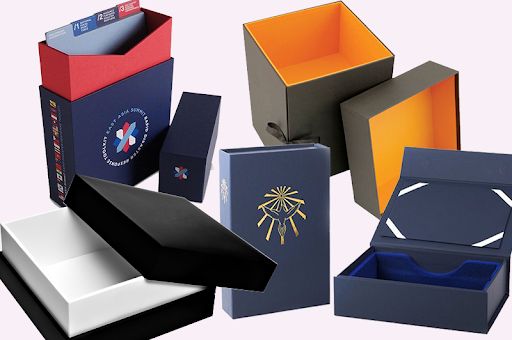In the realm of commerce, the importance of packaging boxes transcends the simple function of containment. These boxes not only safeguard products during transit but also act as pivotal marketing tools that amplify brand identity and enrich customer experiences. This article delves into the evolution, variety, and emerging trends in packaging boxes, underscoring their critical role in an increasingly competitive marketplace.
The Evolution of Packaging Boxes
The history of packaging is as old as trade itself, with its early forms including natural materials like leaves and animal skins. However, as trade routes expanded and the demand for durable transportation solutions grew, packaging technology evolved significantly.
1. Early Developments:
- 18th Century: The use of wooden crates and barrels became prevalent for transporting goods across long distances.
- Late 19th Century: The invention of corrugated cardboard was a game-changer, providing a lightweight yet strong packaging option.
2. 20th Century Innovations:
- 1920s: The proliferation of pre-cut cardboard boxes standardized many packaging processes, enhancing efficiency.
- 1950s and Beyond: The introduction of plastics brought versatility to packaging options, including improved durability and water resistance.
3. 21st Century Trends:
- Sustainability: A growing environmental consciousness has spurred the demand for packaging made from recycled and renewable resources.
- Technological Integration: Innovations such as QR codes, RFID tags, and even augmented reality have begun to be integrated into packaging to enhance consumer interaction and product tracking.
Types of Packaging Boxes
The diversity in packaging materials and designs is vast, each serving different sectors’ specific needs effectively.
1. Cardboard Boxes:
- Corrugated Boxes: These are the standard in shipping due to their protective fluted layers which cushion contents effectively.
- Paperboard Boxes: These are lighter and used for consumer goods packaging, ranging from cereals to electronics.
2. Plastic Boxes:
- Polyethylene Terephthalate (PET): Often chosen for its clarity and strength, PET is used for packaging foods and beverages.
- High-Density Polyethylene (HDPE): This material is selected for its robustness and is commonly used in the packaging of heavier items.
3. Specialty Boxes:
- Gift Boxes: These are crafted to be visually appealing and are used in retail settings to enhance the perceived value of products.
- Thermal Boxes: Used for shipping temperature-sensitive goods, these boxes are essential in the food and pharmaceutical sectors.
Additional Packaging Materials
Beyond cardboard and plastic, there are innovative materials that cater to specific industry needs or sustainability goals:
1. Metal Boxes:
- Tin and Aluminum: Used primarily in the food industry, especially for canned goods, offering excellent barrier properties against air and light.
2. Glass Containers:
- Jars and Bottles: Ideal for preserving the flavor and extending the shelf life of contents, commonly used in the food and beverage industries.
The Role of Packaging Boxes in Marketing
Effective packaging goes beyond functionality by creating an emotional connection through aesthetics and design, thus playing a key role in consumer decision-making.
1. Brand Identity:
- The tactile and visual aspects of packaging contribute to building a recognizable brand presence.
- Consistency in packaging design across all products reinforces brand recognition and loyalty.
2. Customer Experience:
- Features like easy-open tabs, resealability, and secondary uses enhance the practicality and attractiveness of packaging.
- Transparent packaging practices and sustainability can significantly sway buyer preferences, particularly among environmentally conscious consumers.
Regulatory and Compliance Aspects
Understanding and adhering to packaging regulations is crucial for companies to ensure safety, compliance, and environmental responsibility:
1. Food Safety:
- Packaging intended for food and beverages must meet strict standards to prevent contamination and preserve health.
- Regulations such as the FDA in the United States and EFSA in Europe set guidelines that packaging must comply with.
2. Environmental Regulations:
- Many regions now have laws that require packaging to be recyclable, compostable, or reusable.
- Companies must navigate these regulations to not only comply legally but also meet consumer expectations for sustainable practices.
Future Trends
As we look to the future, packaging will continue to evolve with advancements in materials science, manufacturing processes, and digital technology:
1. Smart Packaging:
- Future packaging will incorporate more advanced technologies like IoT connectivity, enhancing product tracking, and consumer engagement.
- These technologies can also play a crucial role in the management of inventory and quality control.
2. Personalization and Customization:
- With digital printing and on-demand manufacturing, companies can produce packaging that caters to individual tastes and preferences, enhancing the consumer experience and loyalty.
3. Automation and AI:
- Continued automation of packaging production lines will improve efficiency and reduce costs.
- AI can further optimize package design for space efficiency, cost reduction, and environmental impact, ensuring optimal performance across the supply chain.
Conclusion
Packaging boxes are integral to product presentation, protection, and marketing. Their evolution from mere containers to sophisticated tools that enhance the user experience, promote environmental sustainability, and incorporate advanced technologies reflects their central role in the modern economy. As businesses innovate continuously, the humble packaging box is set to significantly influence the future dynamics of global commerce and consumer interaction.

